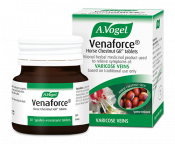An introduction to varicose veins and heat
One of the common questions we’re asked about varicose veins is ‘can heat make varicose veins worse?’, so we thought we’d explore this topic a little further.
The simple answer is, unfortunately, ‘yes’.
Heat can worsen the varicose veins themselves, but can also worsen the symptoms that accompany them, such as heavy, aching legs and cramps. Hot baths, saunas, hot tubs and hot weather are all common factors.
But why does heat affect varicose veins?
How heat worsens varicose veins
When we get too warm, our body responds by trying to cool itself down. It does this by dilating (expanding) veins, to allow more blood to flow to the surface of the skin – this is what causes your skin to go red when you touch something hot, or if you feel too hot. When combined with the process of sweating, this helps cool blood on the surface of the skin, which helps cool your whole body down.
In pushing blood up to the surface of the skin, this mechanism directs more blood towards varicose veins as these are commonly found just under the surface of the skin. In dilating blood vessels, this increases the volume of blood which passes through the veins.
As you will know, varicose veins are swollen, damaged veins, caused by a malfunctioning valve. This broken valve allows blood to flow backwards into the vein where it begins to pool; damaging and stretching the vein. So when our cooling mechanism pushes a larger volume of blood into these veins it puts even more pressure on them, causing further swelling, pooling and damage.
My Top Tip: Venagel provides relief from symptoms associated with varicose veins. It can be used during pregnancy, in hot weather and while travelling to cool heavy, tired legs. Venagel provides relief from symptoms associated with varicose veins. It can be used during pregnancy, in hot weather and while travelling to cool heavy, tired legs.
|
How heat worsens the symptoms of varicose veins
Aside from the visual symptoms of varicose veins, there are also a number of secondary symptoms that tend to accompany this condition.
Aching legs can occur because the veins are working harder and harder to efficiently pump blood against gravity and back to the heart – a tough job for already-damaged veins. This, along with the build-up of toxins that result from pooling blood, causes legs to ache. When the body warms up and extra blood is sent to these surface veins, inevitably they have to work even harder, which can exacerbate the aching feeling in your legs.
Varicose veins can also cause your ankles and feet to swell, as a result of poor circulation in this area. Again, as temperatures increase and the body sends more blood to the surface of the skin – and the damaged varicose veins – this problem can worsen. Many people experience swollen feet in warmer weather anyway, so naturally this will be worse for people with varicose veins.
Many people experience leg cramps as a result of varicose veins. Again, this has to do with the veins being overworked, and the pooling of deoxygenated blood and toxins in the surrounding tissue. However, cramping can also occur in hot weather as a result of dehydration and salt loss – this is known as heat cramps.
What can you do about it?
Well first of all, the obvious solution is to avoid excessive heat. This means stay away from saunas and hot tubs, and try to have warm baths rather than hot ones – and make sure you don’t soak in them for too long!
In hot weather, take measures to keep yourself cool so your veins don’t have to work too hard – sit in the shade, avoid the sun during the hottest hours (11am – 3pm) and use a fan to keep cool. You could also apply wet towels or flannels to your legs to keep them cool, but also to the back of your neck to keep your whole body cool.
In addition you should:
- Make sure to drink plenty of water to keep hydrated and prevent cramps
- Elevate your feet in warm conditions to help your veins pump blood towards your heart more easily. This will also help prevent swelling in the feet and ankles
- Try not to sit still – we know that in warm weather it’s tempting to lie around all day, but try to get up and do something active to boost your circulation. Even a quick walk would do you good!
- Rub Venagel onto the affected areas for cooling relief. The action of rubbing these areas also helps stimulate blood flow and circulation
- Take Venaforce tablets for long-term relief of varicose veins symptoms.








